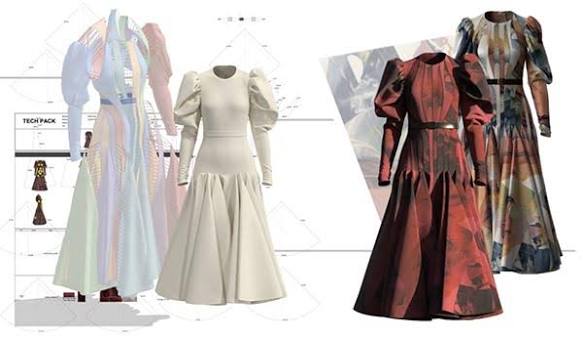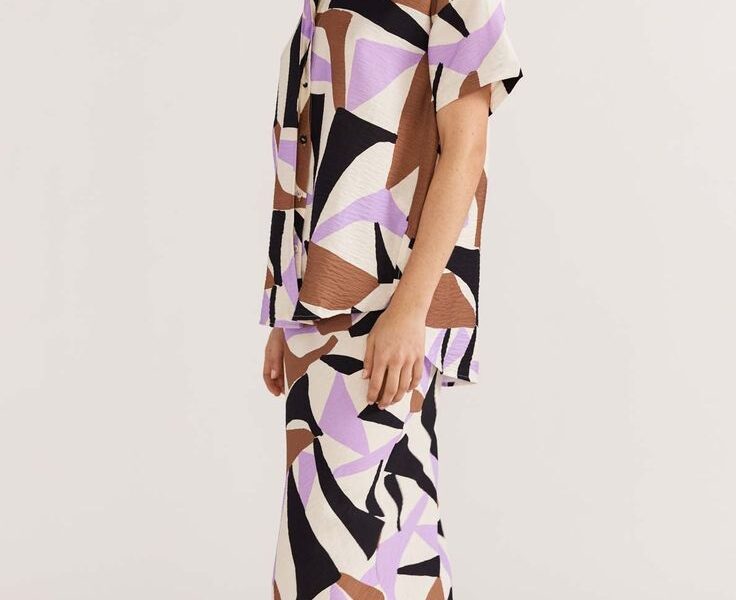Fashion in 2025 is no longer just about fabrics, textures, and patterns—it’s about innovation, intelligence, and interactivity. Digital and tech-integrated fashion has become one of the most transformative shifts in the industry, merging style with science. Designers, brands, and consumers are embracing a future where clothes not only look good but also perform advanced functions, making everyday life easier, healthier, and more immersive.
One of the biggest reasons for this shift is the rise of wearable technology. With the increasing popularity of smart devices, clothing has become a natural extension of personal tech. From biometric sensors that track heart rates and body temperatures to jackets with built-in heating and charging ports, fashion is becoming more functional than ever. This integration is not limited to practicality—it is also influencing creativity. Designers are using LED fabrics, 3D-printed textiles, and augmented reality (AR) to produce pieces that can change color, pattern, or even mood depending on the wearer’s environment.
Another side of tech-driven fashion is the growing digital marketplace. Virtual wardrobes, NFT fashion, and metaverse clothing are redefining the way people consume style. Consumers are no longer restricted to physical clothing—they can purchase and “wear” digital outfits in virtual spaces, gaming platforms, or social media avatars. This not only appeals to younger, tech-savvy generations but also significantly reduces textile waste, aligning with sustainability goals.
Ultimately, digital and tech-integrated fashion blurs the line between the physical and virtual worlds. It is about self-expression beyond reality, convenience beyond tradition, and sustainability beyond materialism. As this trend evolves, it is setting the stage for a future where our wardrobes are as smart, customizable, and innovative as the devices we carry in our pockets.
Smart Wearables and Functional Clothing
Smart wearables are no longer limited to fitness trackers or watches—they have expanded into full-fledged clothing lines that combine fashion with high-tech functionality. In 2025, functional clothing has become an integral part of everyday life, offering practical benefits while remaining stylish. The idea is simple: your clothes should not only make you look good but also make your life easier.
Brands are designing jackets that monitor body temperature and adjust their heating levels automatically, helping users stay comfortable in extreme weather conditions. Sportswear companies are creating garments that can track biometrics like heart rate, hydration levels, and muscle activity, offering athletes real-time insights to enhance performance. Even casual wear is becoming smarter—denim jeans with wireless charging pockets or t-shirts embedded with posture-correcting sensors are becoming part of mainstream fashion.
This trend is also gaining popularity in healthcare. Clothing equipped with advanced sensors can detect irregular heart rhythms, monitor blood glucose levels, or even send emergency alerts, making fashion a literal lifesaver. For the elderly or people with chronic conditions, functional wearables provide independence and peace of mind, while for younger generations, they offer style infused with convenience.
Aesthetic appeal is not sacrificed in the name of technology. Designers are carefully merging fabrics with tech components to ensure garments remain lightweight, breathable, and fashionable. Instead of bulky devices, technology is now woven seamlessly into fabrics, making it almost invisible to the wearer.
In the future, functional clothing will likely become as standard as smartphones are today. As consumers demand efficiency, safety, and sustainability, smart wearables are proving that fashion can be beautiful, practical, and futuristic at the same time.
Virtual Fashion and Digital Wardrobes
The rise of the digital world has paved the way for one of the most fascinating innovations in fashion: virtual clothing and digital wardrobes. In 2025, this is not just a niche trend but a growing industry worth billions. Virtual fashion allows consumers to purchase outfits that don’t exist physically but can be worn digitally through augmented reality filters, gaming avatars, or metaverse platforms.
This trend has been driven by the growing influence of online presence. Social media users and influencers constantly seek unique outfits for their content without the wastefulness of buying endless physical garments. Virtual wardrobes solve this problem—allowing someone to “try on” and showcase hundreds of looks online without producing a single piece of textile. It reduces overconsumption and positions itself as a highly sustainable solution.
Luxury brands have also stepped into this realm, launching NFT-based fashion collections that provide exclusivity and digital ownership. Owning a digital jacket or dress can be as much of a status symbol as owning a physical designer piece. Moreover, digital clothing allows limitless creativity. A dress can shimmer with holographic colors, morph in real-time, or even defy the laws of physics—something that physical fabrics could never achieve.
Consumers are embracing this as an extension of their identity in digital spaces. With the rise of metaverses and immersive gaming worlds, having a unique virtual wardrobe has become as important as one’s real-world style. Fashion shows are also going digital, with models walking in 3D-rendered outfits that exist purely in cyberspace.
In essence, virtual fashion represents the merging of technology, sustainability, and creativity. It empowers individuals to express themselves endlessly while reducing environmental impact. As digital wardrobes become mainstream, the future of fashion might be more about pixels than fabrics—but with just as much artistry and individuality.


